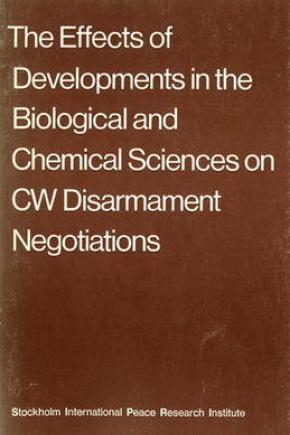The Effects of Developments in the Biological and Chemical Sciences on CW Disarmament Negotiations
Advances in our understanding of metabolism at the molecular level—for example, the mechanisms of enzyme action or of the transport of compounds across biological membranes—offer the prospect of developing, in the near future, new chemical compounds with predetermined metabolic effects. It is possible that some such new compounds having extremely toxic effects could be developed into new chemical warfare agents. High toxicity is only one of the properties necessary in a chemical warfare agent, other essential requirements being suitable physical properties, stability during storage and dissemination and so on, but with the appearance of many new toxic compounds, the chances of finding some with the necessary properties are likely to increase. The dangers of such a situation are better appreciated when it is remembered that all existing chemical warfare agents were discovered, initially, by accident, and that no new supertoxic chemical warfare agent has been found since the discovery of organophosphorus nerve agents some 35 years ago.
This paper describes some of the recent advances in the chemical and biological sciences and examines the consequences of these advances for the future of chemical warfare. A summary of the round table discussion of the possible political consequences of recent advances in the biological and chemical sciences, held in Stockholm, 7 July 1973, is included.
1. A historical survey of CW agent definitions
2. The relevance of advances in the chemical and biological sciences to the possible discovery of certain types of CW agents
Appendix A. The joint SIPRI–IFIAS round table discussion on possible political consequences of recent advances in the biological and chemical sciences, Stockholm, 7 July 1973

